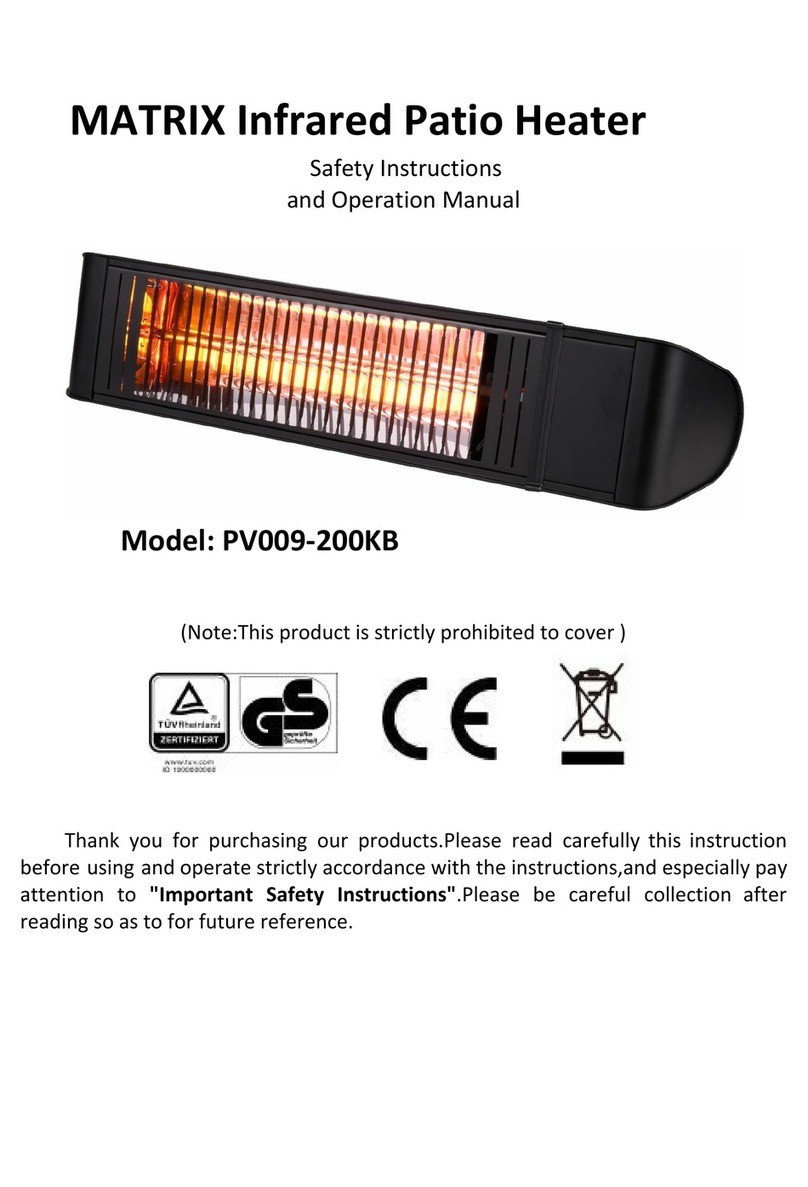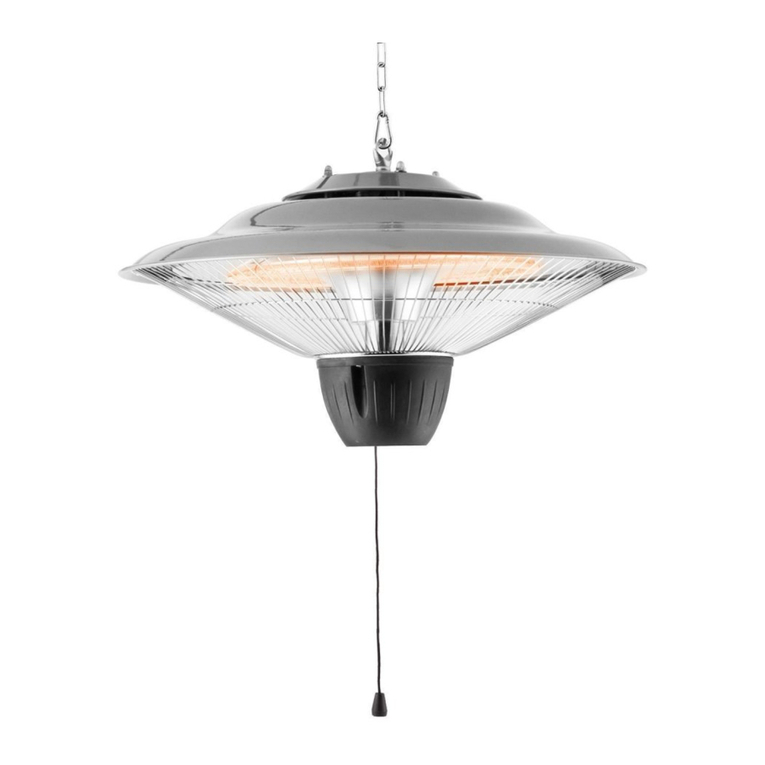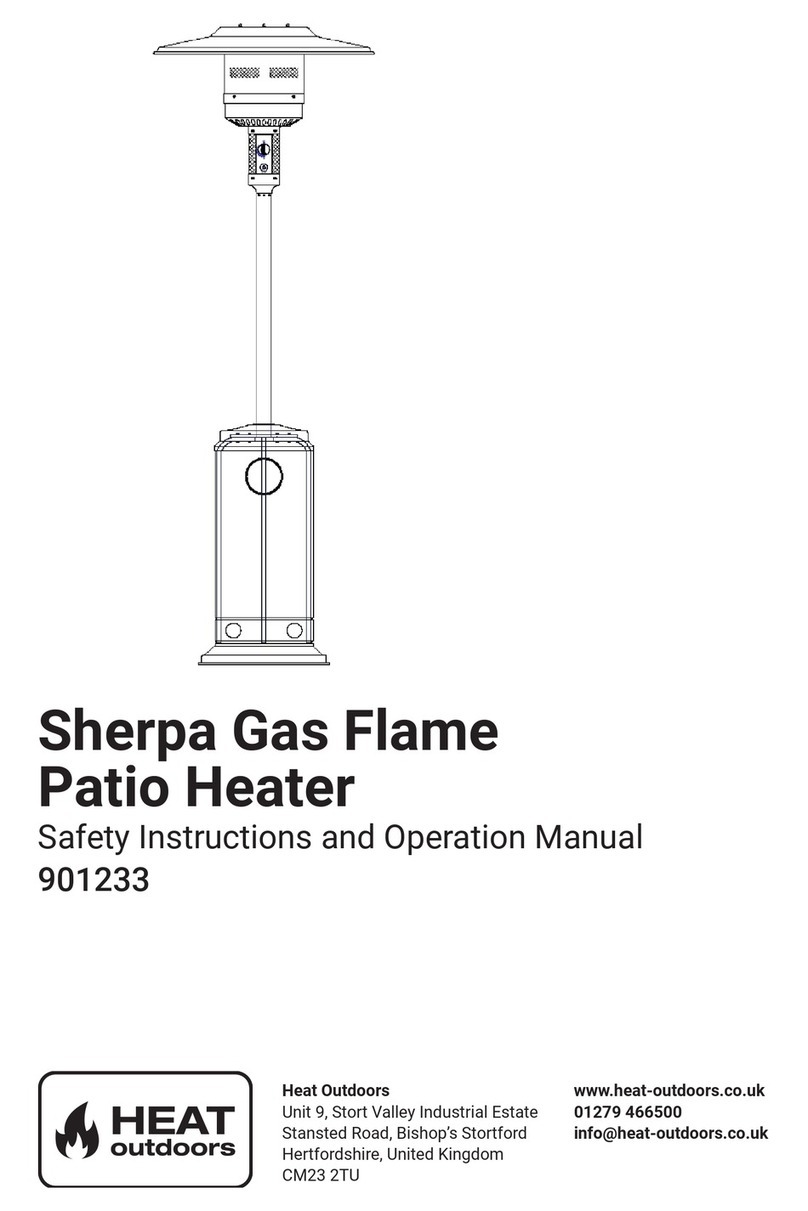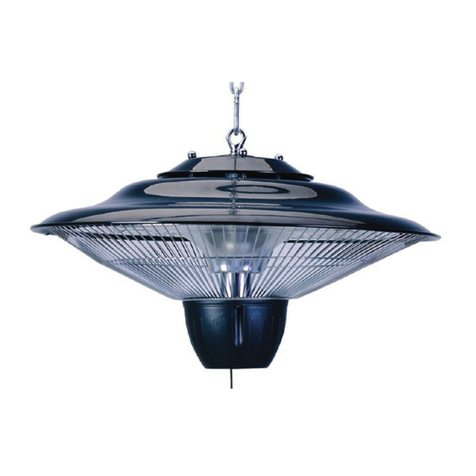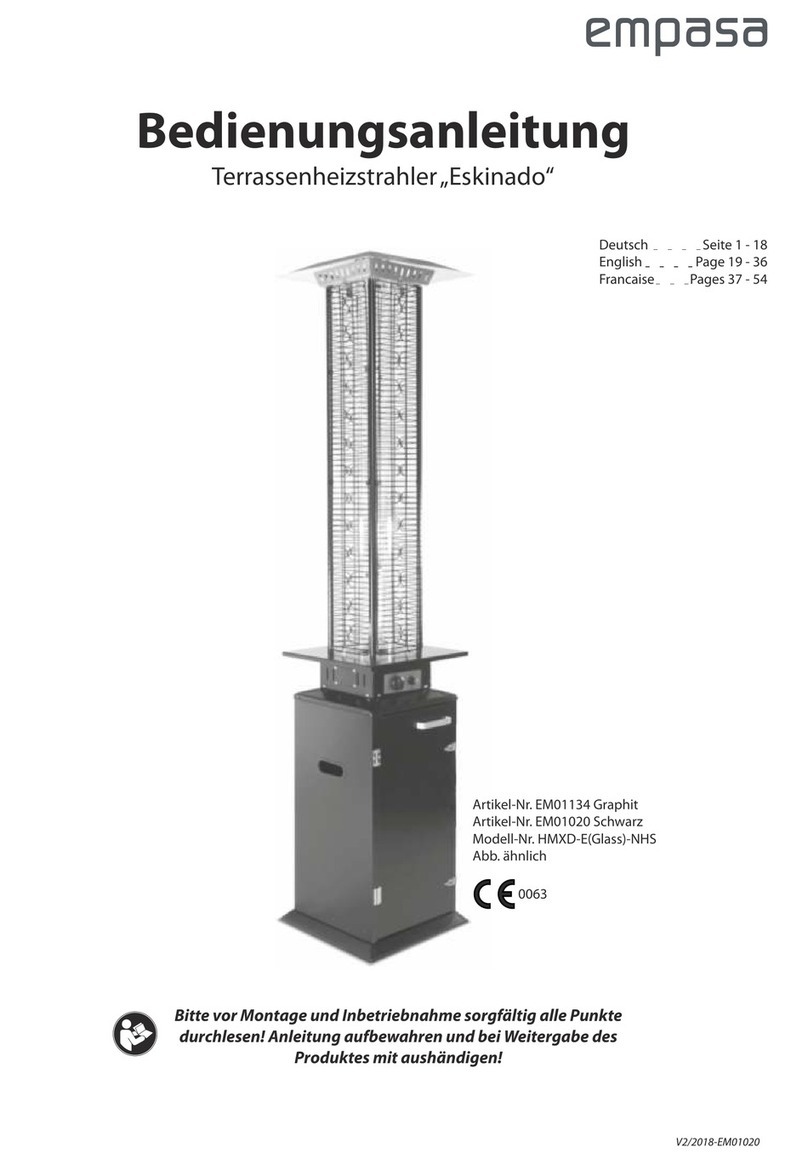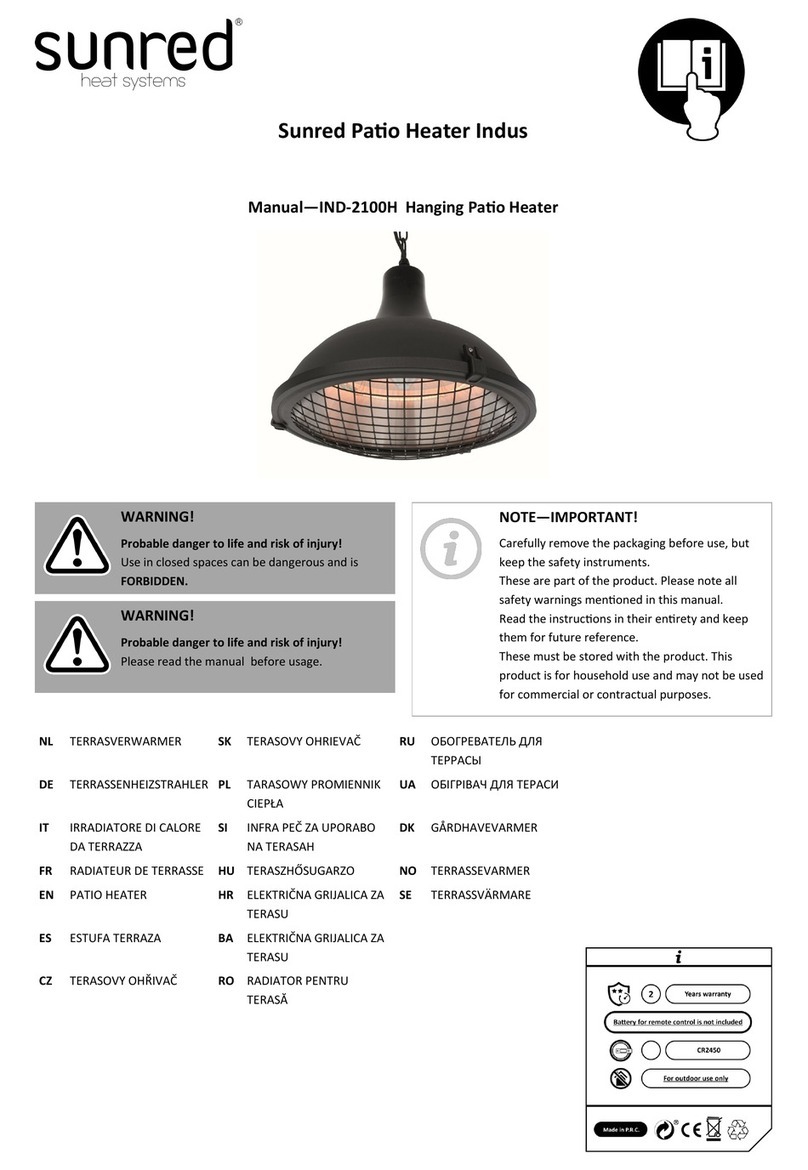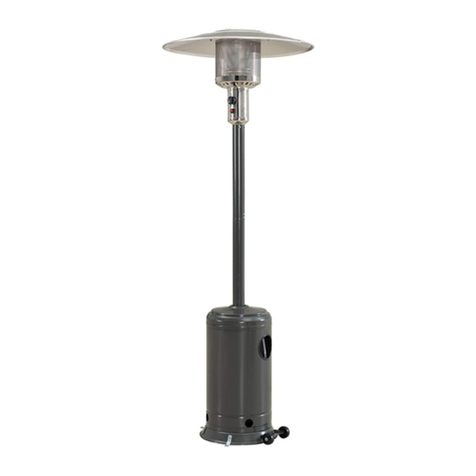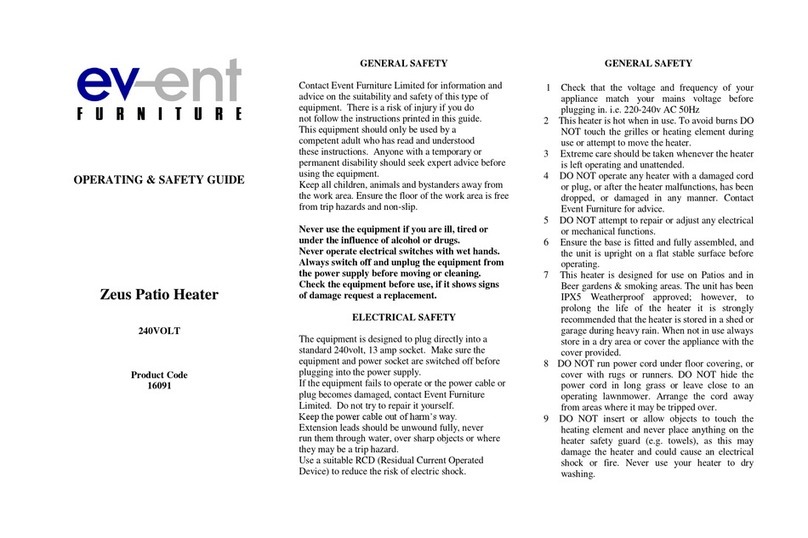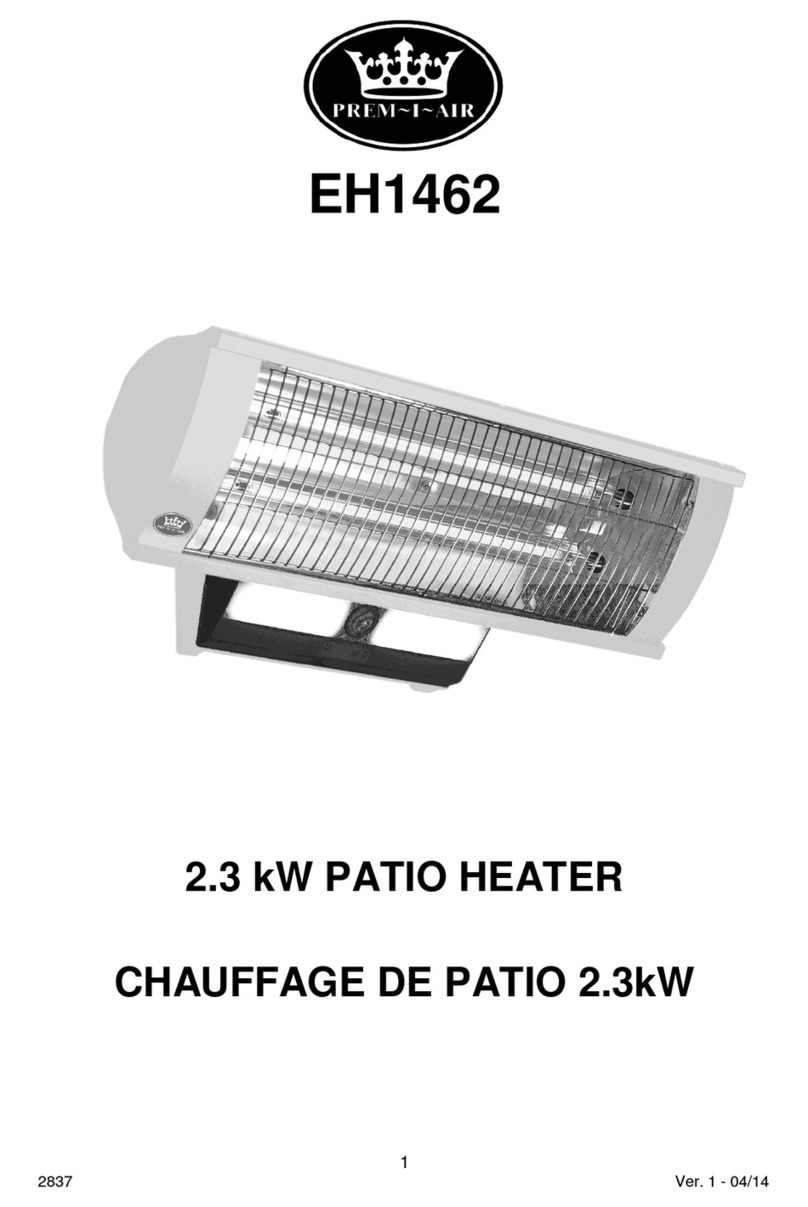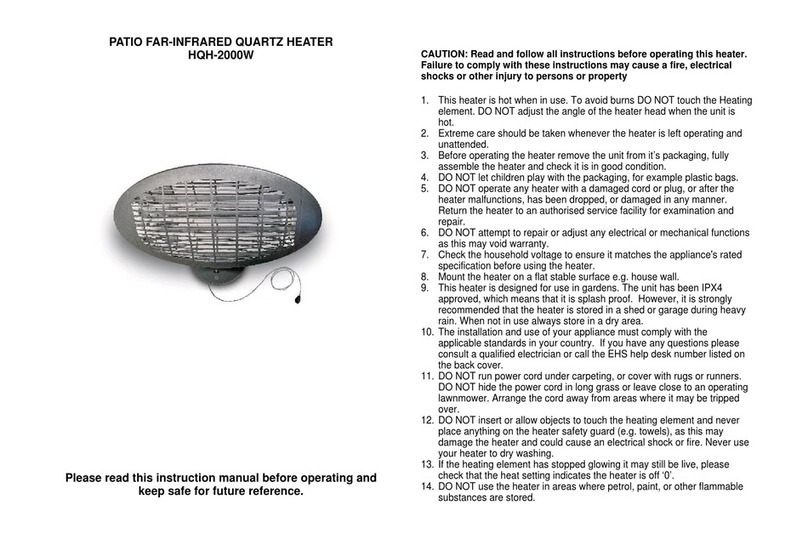
5
Safety Precautions
Safety Precautions
• Performance and safety service of this heater should be performed annually by a
qualied gas engineer.
• Do not use the heater in a combustable atmosphere.
• Do not store or use petrol or other ammable liquids in or near the heater unit.
• Before using the unit check the whole gas system ie. hoses for splits, twists which
may cause gas to leak or prevent ow.
• The recommended frequency of checking the tubing or the exible hose is at least
once per month and each time the cylinder is changed. If it shows signs of cracking,
splitting or other deterioration it should be changed for new hose of the same length
and of the equivalent quality.
• Disconnect gas cylinder before moving the heater.
• Do not attempt to modify any parts of the heater.
• The appliance is not recommended to be used in basements, below ground level or
in areas with limited / no ventilation.
• Ensure the heater is placed on a solid and level surface.
• It is recommended that you change the regulator annually to avoid blockages.
• Do not clean the heater with cleaners that are combustible or corrosive.
• Do not paint any part of the heater.
• The gas cylinder valve should be turned off when the heater is not in use.
• Avoid using the heater when it is raining to prevent water ingress.
• Keep children and vulnerable people away from the heater when in use.
• Do not move the heater when it is in use.
• Check the heater immediately if any of the following exists:
- There is smell of gas.
- The heater performance of the heater seems to be reduced.
- The burner makes popping noise during use (a slight popping noise is normal
when the ame is extinguished after use).
• When the heater is in use the surface of the grills, reector and glass will reach a
high temperature. Do not touch these parts.
• Do not obstruct the ventilation holes of the cylinder housing.
• Only use the gas specied - 13kg-15kg Propane patio gas.
• In adverse weather conditions it is advised the heater is stored undercover or inside
where possible.
• The gas cylinder should be turned off when the heater is not in use.


